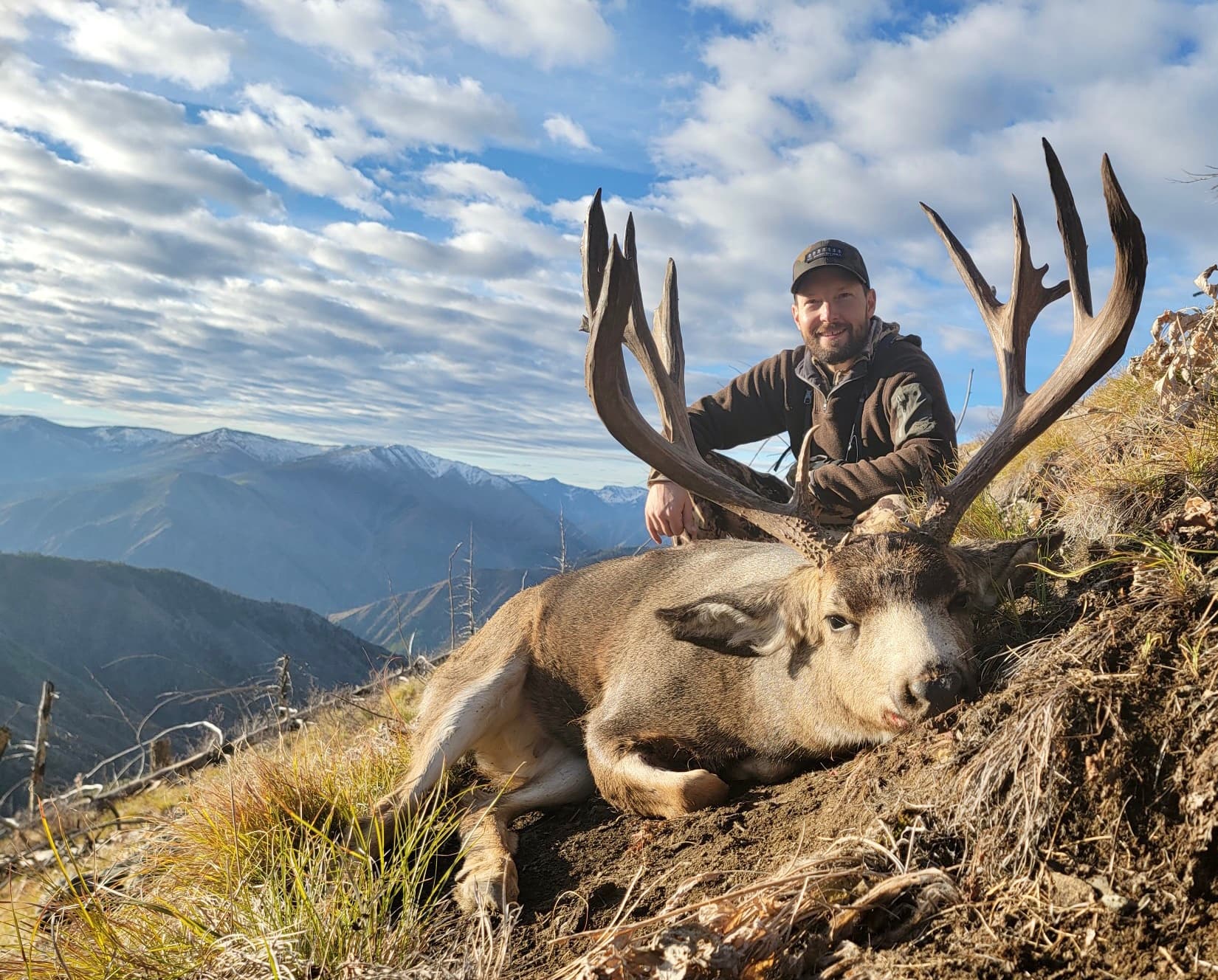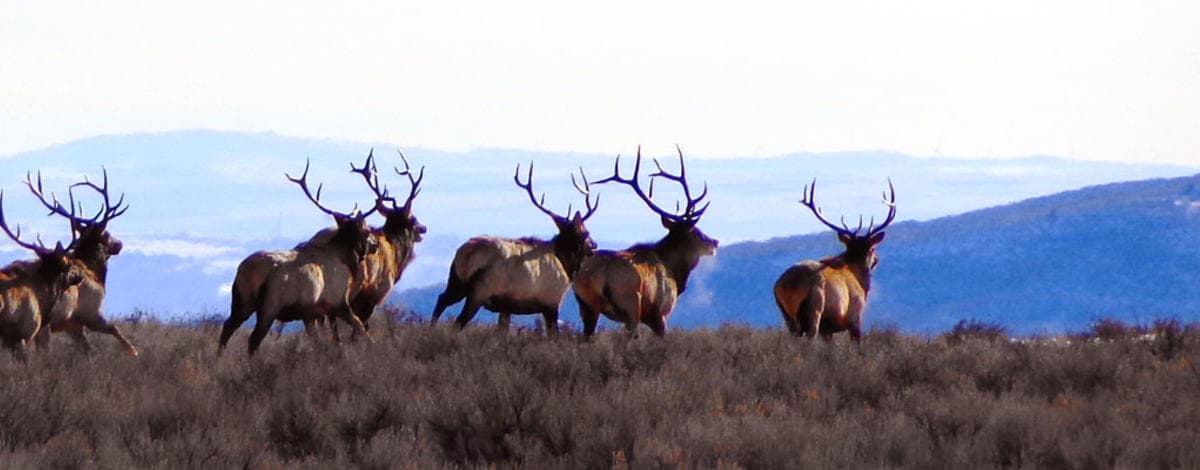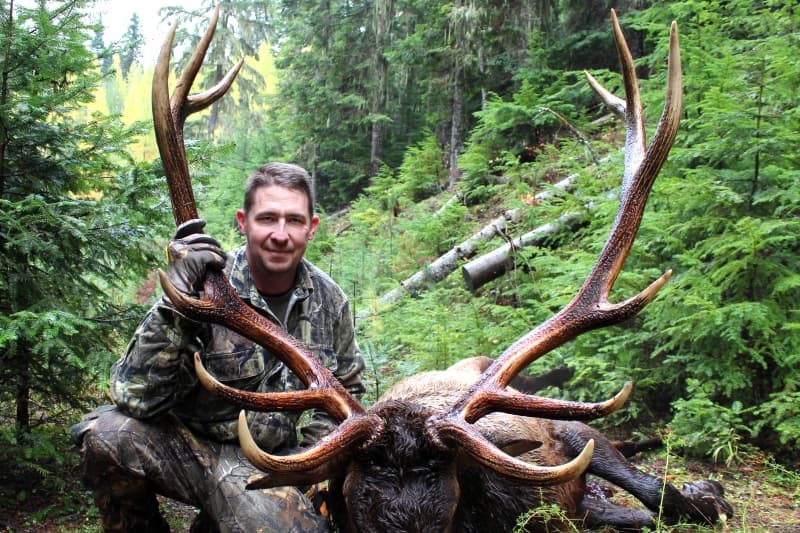Idaho elk hunting is on the rebound! Tags selling out quickly for 2023 season
By Steve Stuebner
If you’re a procrastinator and a hunter, and you’re planning on buying an elk or deer tag on the opening day of big game season, you might think twice about waiting that long to buy a tag.
 Sales of big game hunting tags, especially elk tags in “capped” elk zones where the Idaho Department of Fish and Game limits the number of tags available for resident and non-resident hunters, are moving along at a brisk pace. A few surplus tags from controlled hunts are available, and more will be released on Sept. 7.
Sales of big game hunting tags, especially elk tags in “capped” elk zones where the Idaho Department of Fish and Game limits the number of tags available for resident and non-resident hunters, are moving along at a brisk pace. A few surplus tags from controlled hunts are available, and more will be released on Sept. 7.
If you had hoped to book a trip with an Idaho outfitter, many of them are already booked for the 2023 hunting season, and they’re booking up fast for the 2024 season and reserving dates for 2025.
Get the picture? Idaho is becoming a more popular place to go big game hunting than we’ve seen since the pre-wolf days of the 1980s and early 1990s. Idaho big game hunting is on the rebound!
“The trend is up,” notes Jeff Bitton, a long-time Idaho hunting outfitter who serves on the board of the Idaho Outfitters and Guides Association. “Idaho’s population is growing, and that means more people are applying for hunting licenses and tags.”
The Idaho Department of Commerce recently released the results of a survey of new state residents indicating that “one out of 10 people that moved to Idaho, came here to hunt,” Bitton said.
Idaho is known for providing the classic backcountry hunting trip in the state’s vast wilderness areas, where you ride horseback into the mountains with an outfitter and pack string, stay a week in elk camp, and hunt for the elusive Rocky Mountain elk and mule deer with experienced guides.
“You can still do the whole backcountry experience in Idaho,” Bitton says. “Ride horseback into elk camp, stay cozy in the white wall tents while enjoying hearty meals, hunt hard every day, and have a great elk hunt.”
To find an outfitter who operates where you’d like to go big game hunting, go to huntingidaho.org.
One of the unique aspects of big game hunting in Idaho is that we have a number of super experienced, licensed outfitters who have intimate knowledge of the backcountry – secret spots where big game animals like to feed, travel and sleep. But you still have to stalk the game with an experienced hunting guide, you’ll need to make an accurate shot to harvest the animal.
In short, it’s still going to be a challenging, fair-chase backcountry hunt – something that’s becoming less available in the fast-growing western states, where road-hunting in monster trucks and UTVs can be a bit over the top.
The only issue is that if you were hoping to book a trip with an outfitter for the 2023 hunt season, it might be challenging.
“Every outfitter – especially the established ones that have been in business for quite a while – are already booked for 2023 and some of them are filling up for the 2024 season,” Bitton said. “Realistically, if you’re hoping to hunt with an outfitter, you should be booking a trip for next year or 2025.
“That’s a pretty major change for Idaho. And I have a feeling it’s the way of the future.”
Two things have improved for hunters and hunting outfitters in Idaho – Idaho Fish and Game has been more aggressive about reducing wolf numbers statewide from roughly 1,500 down to 500 as a long-term goal, and backcountry trails are getting improved by outfitters, the Forest Service, and the Idaho Trails Association and the Selway-Bitterroot Frank Church Foundation volunteer groups.
“We’ve definitely seen an improvement in wolf management,” Bitton says. “And there is better access to the backcountry because of the increase in trail maintenance.”
IDFG hunting outlook for 2023
 Idaho Fish and Game published its elk and deer hunting outlook last week. The general upshot is that mule deer bucks, does and fawns got hit hard by heavy snow in Southeast Idaho last winter, which saw record levels of mountain snowpack.
Idaho Fish and Game published its elk and deer hunting outlook last week. The general upshot is that mule deer bucks, does and fawns got hit hard by heavy snow in Southeast Idaho last winter, which saw record levels of mountain snowpack.
“By early January, it was clear Fish and Game was facing an extraordinary winter, and despite a large effort by staff and volunteers to emergency feed deer and elk, a lot of animals were lost due to deep, prolonged snow and frigid temperatures that stretched into spring,” the report says.
The hard winter could set herds back several years, officials said.
“Mule deer have traditionally experienced “boom and bust” cycles with herds holding stable or growing during normal winters, spiking after mild winters, and then roughly once in a decade, getting hit with a catastrophic winter like what happened in eastern Idaho,” the report said.
Things are expected to be more rosy for elk. For the ninth straight year, elk harvest has exceeded 20,000 animals, tying the state record for consecutive-year harvests, set in the mid-1990s (pre-wolf). Elk harvest in 2022 for bull elk was 11,084, compared to 11,142 in 2021. Cow elk harvest saw a slight increase in 2022.
“Overall, elk populations are looking good,” said Toby Boudreau, IDFG deer and elk coordinator. “Elk are a lot more resilient than deer when it comes to harsh winters, and calf survival stayed relatively high through May.”
Last winter, cow elk survival ran at 91 percent, and elk calf survival was about 72 percent in units where cows and calves are collared and monitored. Those numbers indicate a growing elk herd, he said. By comparison, in recent years, calf survival rates ranged from a low of about 52% to a high of 84%.
When you’re deciding where to hunt, check out the statewide map in the IDFG elk regulations handbook that indicate where elk populations are above management objective, and the areas where they are below management objective. Check out the IDFG hunt planner as well.
This year, bull elk numbers were below management objective in the Sawtooth, Selway, Elk City, Lolo, Dworshak and Elk City zones. They are above objective in Hells Canyon, Weiser, McCall, Brownlee, Boise River, Smoky-Bennett, Pioneer, Lemhi, Beaverhead, Island Park, Tex Creek and Bear River. See more in the IDFG rules/regulations booklet.
Finding tags for 2023 hunt season
 Figuring out where you’d like to hunt elk in Idaho is getting to be increasingly complicated. Page through the IDFG elk regulations pamphlet online or on hard-copy and make notes on the places where you like to hunt. Most of the remaining opportunities are for resident hunters, although there are a few non-resident tags left here and there.
Figuring out where you’d like to hunt elk in Idaho is getting to be increasingly complicated. Page through the IDFG elk regulations pamphlet online or on hard-copy and make notes on the places where you like to hunt. Most of the remaining opportunities are for resident hunters, although there are a few non-resident tags left here and there.
You’ll also need to check on the different between “A” and “B” tags, which have different dates for hunts and sometimes different weapons allowed such as a late-season muzzleloader hunt.
Outfitter set-aside tags had to be returned to IDFG in mid-July, so those are no long available for non-residents trying to book a last-minute trip with an outfitter.
Many elk zones have a limited number of tags available in the capped elk zones. As of early September, seven out of 18 hunts in capped zones already were sold out or are close to selling out. That page will be updated soon by IDFG with the latest numbers as of the end of August or early September.
Surplus tags from unsold controlled hunts in Idaho also are being released right now, and more will be released on Sept. 7. Those hunts are very specific to particular areas so be sure to check on the details to make sure the hunts will work for you. Some require private landowner access.
There are several elk zones that don’t have caps, where you can buy a general bull elk tag.
Those include the following tags:
- Bannock A
- Bear River A
- Beaverhead A
- Big Desert A
- Boise River A
- Boise River B
- Brownlee A
- Dworshak A
- Island Park A
- Lemhi A
- McCall A
- McCall B
- Palisades A
- Palisades B
- Palouse A
- Palouse B
- Panhandle A
- Panhandle B
- Pioneer A
- Salmon A
- Smoky Bennett A
- Snake River A
- South hills A
- Tex Creek A
- Tex Creek B
- Weiser River A
IDFG will be updating the capped zone elk tag availability page in the big game regulations booklet. See this link for the latest information.
One more reminder, if you’re into predator hunts while you’re out elk and deer hunting. Predator hunts are a great way for big game hunters to take part in game management, officials say.
In wilderness hunting areas, such as the Middle Fork zone, people can buy an elk, deer, mountain lion, black bear and wolf tag.
For more information, go to https://huntingidaho.org/
Steve Stuebner is a regular contributor to the Exploring Idaho.
